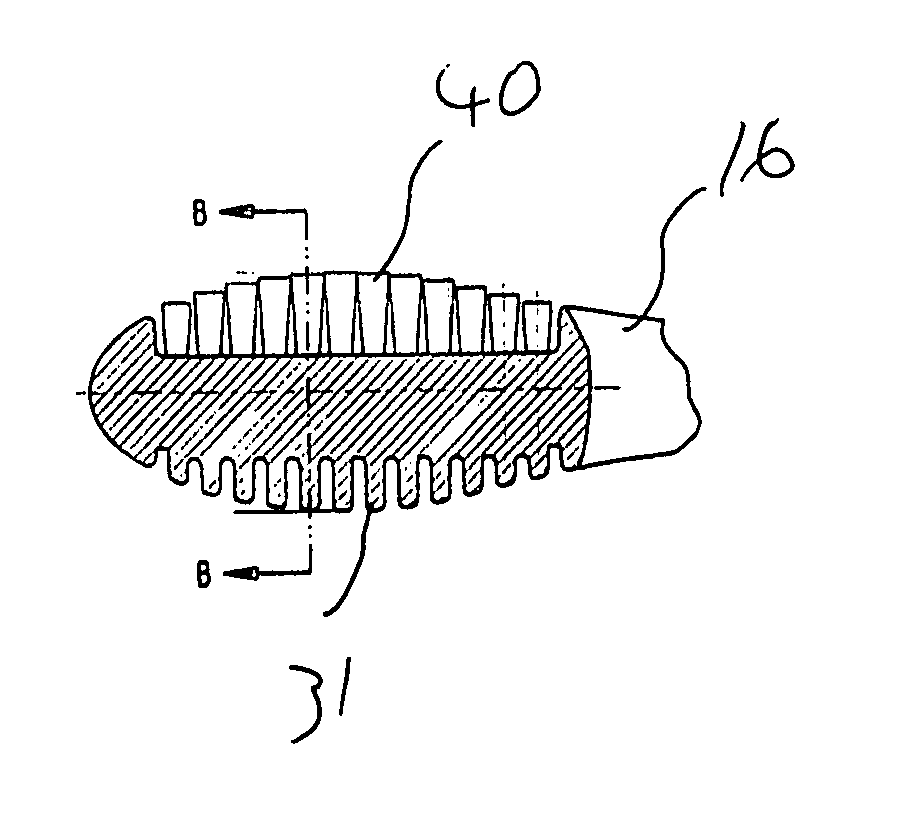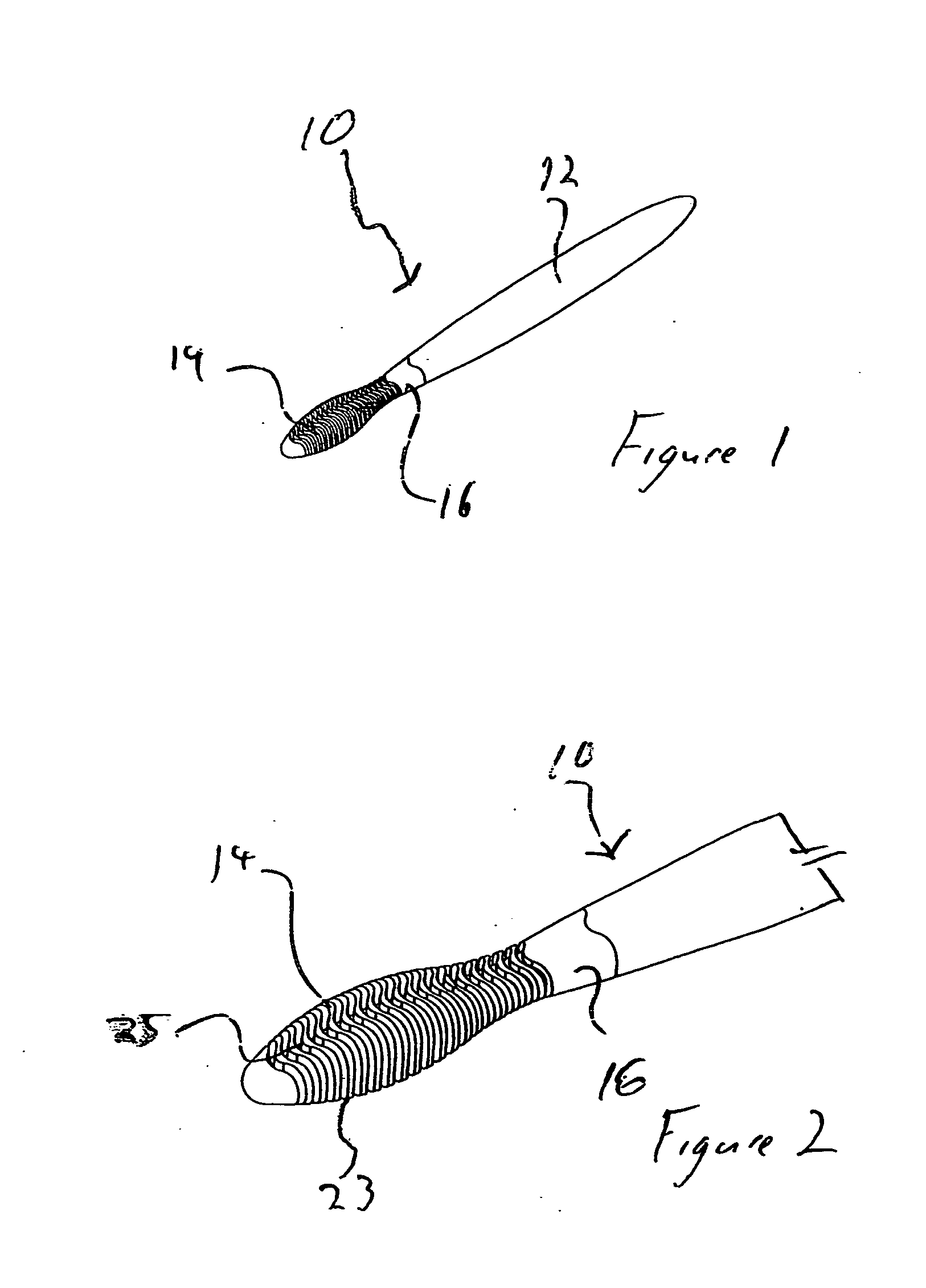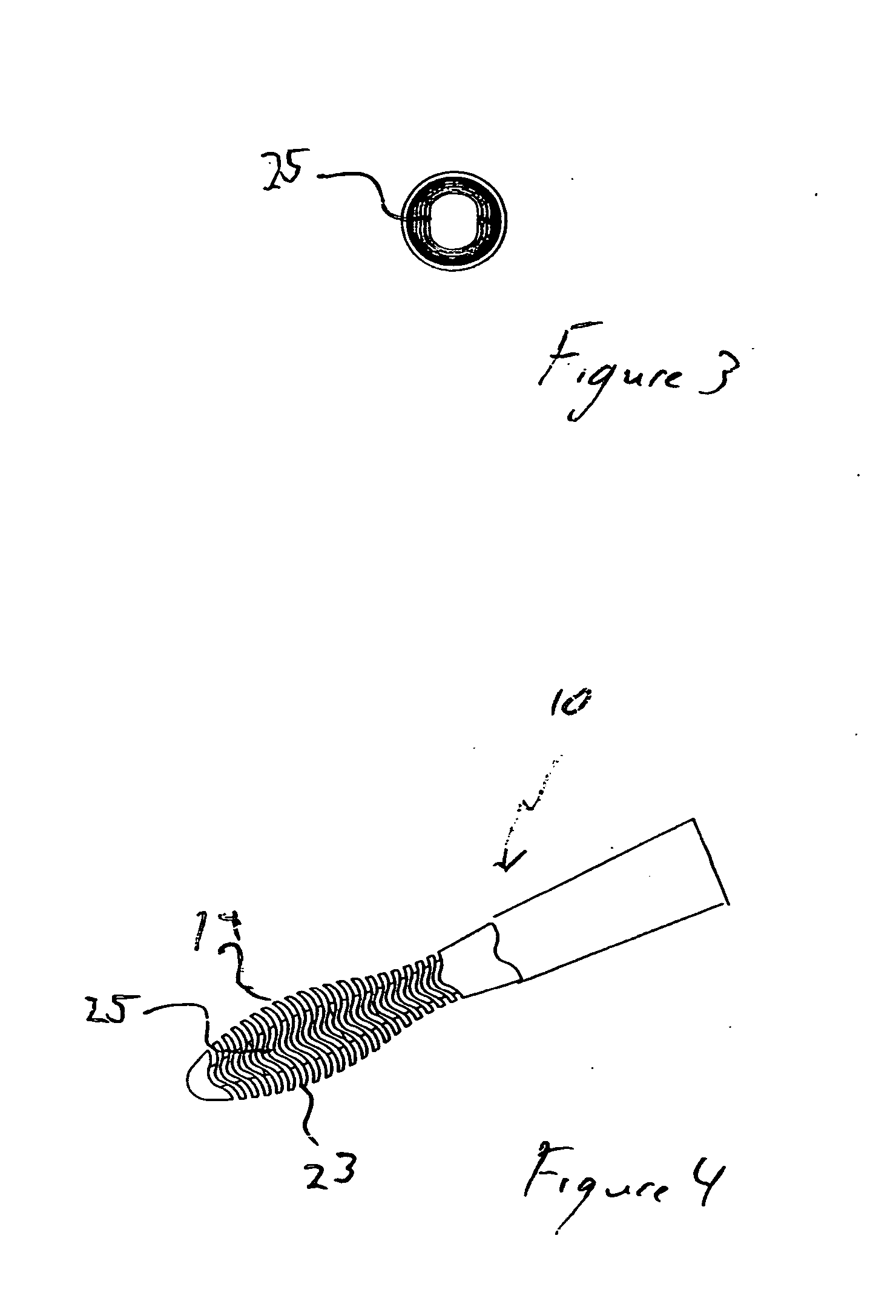Dental device
- Summary
- Abstract
- Description
- Claims
- Application Information
AI Technical Summary
Benefits of technology
Problems solved by technology
Method used
Image
Examples
Embodiment Construction
[0056] Referring to FIGS. 1-6, a view of a dental device 10 in accordance with the principles of the present invention is seen. FIG. 1 is perspective view of a dental device in accordance with the principles of the present invention. The dental device 10 includes a handle portion 12 and a joinder portion 16. The handle portion 12 is preferably comprised of rigid or semi-rigid materials such as, for example, plastic, composite, ceramic or metal.
[0057] The head 14 includes a small rigid or semi-rigid core 18 in the center. The core 18 can be seen in the cross-sectional view of FIG. 5. In the preferred embodiment, the core is comprised of an extension of the handle portion 12. The head portion 14 can preferably be co-molded with an elastomeric material or elastomeric foam over the core 18. In alternative embodiments, alternative materials such as thermoplastic rubber or thermoplastic elastomer can be utilized.
[0058] One of the difficulties in cleaning or brushing small children's tee...
PUM
 Login to View More
Login to View More Abstract
Description
Claims
Application Information
 Login to View More
Login to View More - R&D
- Intellectual Property
- Life Sciences
- Materials
- Tech Scout
- Unparalleled Data Quality
- Higher Quality Content
- 60% Fewer Hallucinations
Browse by: Latest US Patents, China's latest patents, Technical Efficacy Thesaurus, Application Domain, Technology Topic, Popular Technical Reports.
© 2025 PatSnap. All rights reserved.Legal|Privacy policy|Modern Slavery Act Transparency Statement|Sitemap|About US| Contact US: help@patsnap.com



